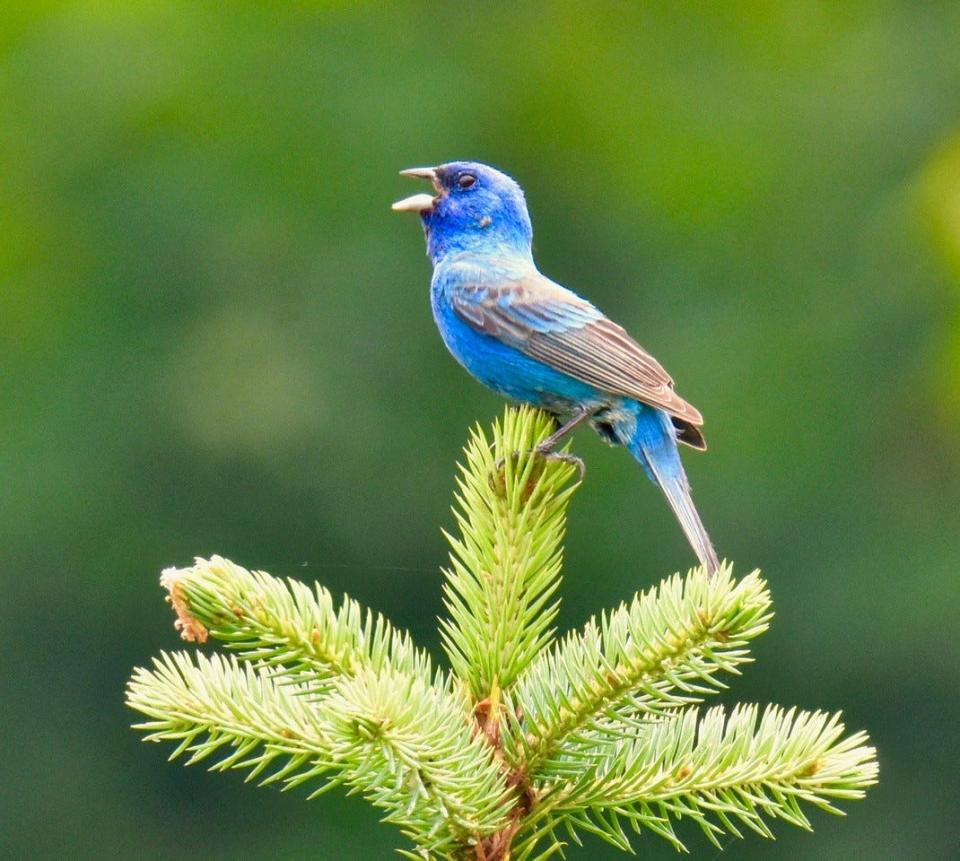Great Outdoors column: With so many beautiful local birds, how do you pick a favorite?
It’s a soft life we lead with these hills all around. They roll like the gentlest swell on an ocean of green. Said green comes from forest, mixed in with cow pasture, accented by lush fields of corn.
On a warm day last week, we set sail on a nature excursion through similar environs. Windows wide open, we sought out dirt roads where the going would be bird-friendly slow. West of Hancock, NY, over William Penn’s border, they outnumber paved roads five to one.
We watched as we crept along. We listened as well, given bird songs still rule summer mornings. Five hours later, we’d seen buntings and bobolinks, heard songs sung by wrens in shrub tangles and shaded ravines. We’d halted the caravan numerous times when butterfly wings slowly opened and closed as their owners sipped nectar from flowers.

Highlights included three sightings of kestrels. Diminutive falcons, they looked down from power lines, seeking out mice and grasshoppers. Shy to a fault, even though we weren’t close, they took off quick and erratic on long pointed wings, trading one open field for the next.
You might wonder which birds were the prettiest seen. Asking that is like asking, you guessed it, which child is your favorite. Truth be told, we all have one, so the indigo bunting squeaked through with the champion’s trophy.
Just the name indigo sets it up as a winner. You can have your cerulean, your azure, your mauve. Give me a bird dipped in blue and then violet to emerge as an indigo gem.
One bunting perched at the top of a gorgeous blue spruce. We agreed that was gilding the lily. He was there to announce with a sharp, high-pitched song that the brushy terrain he surveyed was his turf. Trespassers would be run out of town.
More Great Outdoors: Robins bring lively addition as temporary tenants
As I write this, I’m wavering. How can I proclaim a bunting more lovely than the warblers we ogled up close?
The first was a black-and-white, deep forest dweller. This zebra-striped forager spirals up tree trunks, its decurved bill probing for insects beneath peeling bark.
The second we found in a thicket of shrubs and young trees at the edge of a forest. Locating the bird was not difficult given the loud song we heard it broadcasting. “Pleased, pleased, ta meetcha!” would be how I might put it in words.
As opposed to the black-and-white’s art deco wardrobe, this warbler showed off a black mask, yellow cap, white cheek patches, and – yes – chestnut sides.
Did I mention we came across three cedar waxwings? How can they not win the title of prettiest bird? Start with a lemon-colored belly and matching yellow band at the tip of the tail. Then add a black mask edged in white. Top it off with brown plumage so smooth, soft and satiny, it looks more like velvet than feathers.
Favorite child? I will stick with the bunting, I guess, but don’t press me too hard or I’ll crumble.
E-mail Rick at rmarsi@stny.rr.com
This article originally appeared on Binghamton Press & Sun-Bulletin: Nature's beauty captured in ample number of beautiful New York birds

